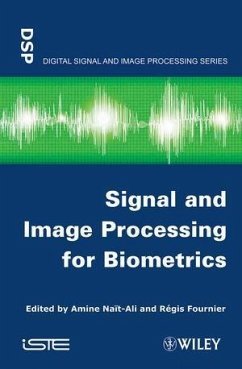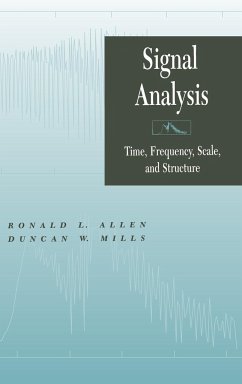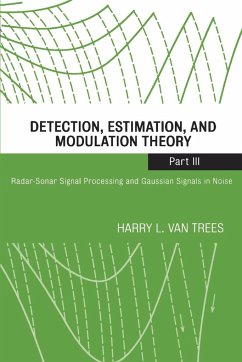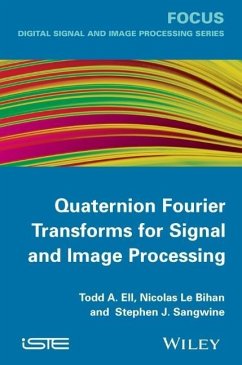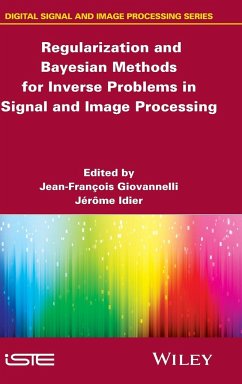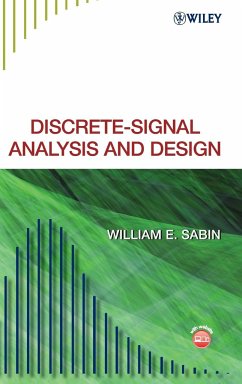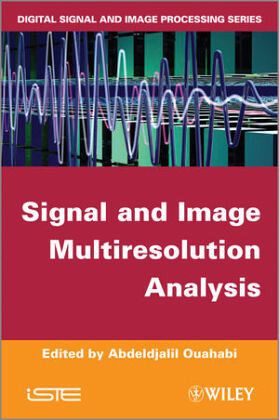
Signal and Image Multiresolution Analysis
Versandkostenfrei!
Versandfertig in über 4 Wochen
161,99 €
inkl. MwSt.
Weitere Ausgaben:

PAYBACK Punkte
81 °P sammeln!
Multiresolution analysis using the wavelet transform hasreceived considerable attention in recent years by researchers invarious fields. It is a powerful tool for efficiently representingsignals and images at multiple levels of detail with many inherentadvantages, including compression, level-of-detail display,progressive transmission, level-of-detail editing, filtering,modeling, fractals and multifractals, etc.This book aims to provide a simple formalization and new clarity onmultiresolution analysis, rendering accessible obscure techniques,and merging, unifying or completing the technique wi...
Multiresolution analysis using the wavelet transform hasreceived considerable attention in recent years by researchers invarious fields. It is a powerful tool for efficiently representingsignals and images at multiple levels of detail with many inherentadvantages, including compression, level-of-detail display,progressive transmission, level-of-detail editing, filtering,modeling, fractals and multifractals, etc.
This book aims to provide a simple formalization and new clarity onmultiresolution analysis, rendering accessible obscure techniques,and merging, unifying or completing the technique with encoding,feature extraction, compressive sensing, multifractal analysis andtexture analysis. It is aimed at industrial engineers, medicalresearchers, university lab attendants, lecturer-researchers andresearchers from various specializations. It is also intended tocontribute to the studies of graduate students in engineering,particularly in the fields of medical imaging, intelligentinstrumentation, telecommunications, and signal and imageprocessing.
Given the diversity of the problems posed and addressed, this bookpaves the way for the development of new research themes, such asbrain-computer interface (BCI), compressive sensing,functional magnetic resonance imaging (fMRI), tissuecharacterization (bones, skin, etc.) and the analysis of complexphenomena in general. Throughout the chapters, informativeillustrations assist the uninitiated reader in betterconceptualizing certain concepts, taking the form of numerousfigures and recent applications in biomedical engineering,communication, multimedia, finance, etc.
This book aims to provide a simple formalization and new clarity onmultiresolution analysis, rendering accessible obscure techniques,and merging, unifying or completing the technique with encoding,feature extraction, compressive sensing, multifractal analysis andtexture analysis. It is aimed at industrial engineers, medicalresearchers, university lab attendants, lecturer-researchers andresearchers from various specializations. It is also intended tocontribute to the studies of graduate students in engineering,particularly in the fields of medical imaging, intelligentinstrumentation, telecommunications, and signal and imageprocessing.
Given the diversity of the problems posed and addressed, this bookpaves the way for the development of new research themes, such asbrain-computer interface (BCI), compressive sensing,functional magnetic resonance imaging (fMRI), tissuecharacterization (bones, skin, etc.) and the analysis of complexphenomena in general. Throughout the chapters, informativeillustrations assist the uninitiated reader in betterconceptualizing certain concepts, taking the form of numerousfigures and recent applications in biomedical engineering,communication, multimedia, finance, etc.



